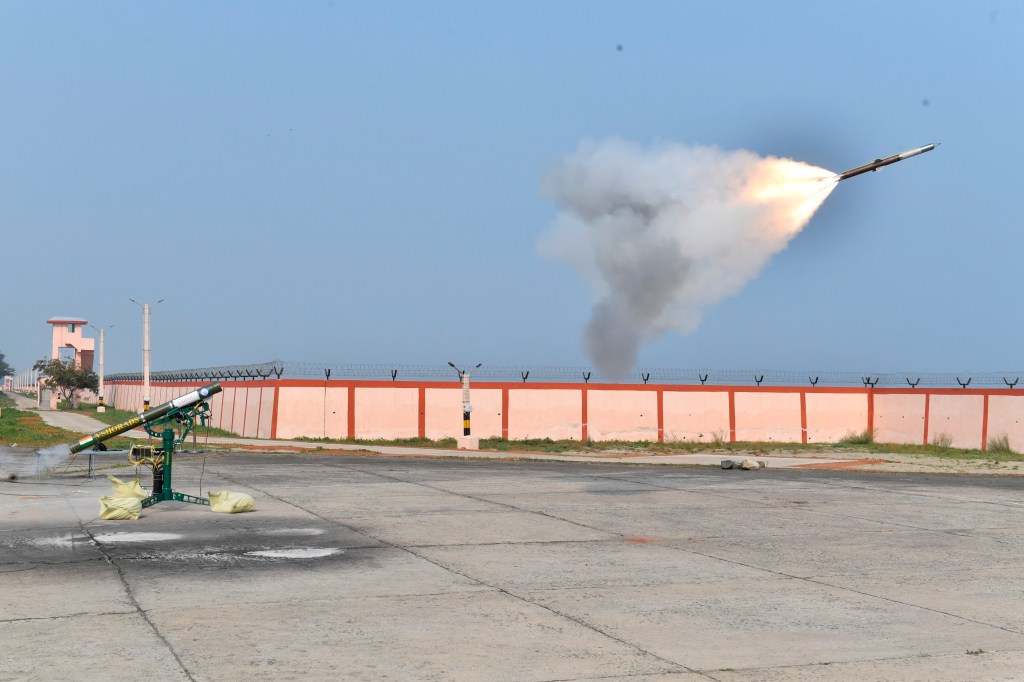By Brigadier Sandeep Tyagi (Retd)
In modern warfare, air defence is as critical as ground combat. Recent conflicts in West Asia and Eastern Europe have highlighted that robust air defence can determine the outcome of a war. Without an effective shield against aerial threats, even the most formidable military can suffer devastating losses.
The Expanding Threat Landscape
The Indian Army’s Air Defence (AAD) Corps is tasked with safeguarding not just the Army but also the Indian Air Force, Indian Navy, and critical national assets, including military bases, power plants, and government buildings. Over the years, the spectrum of threats has expanded significantly. India now faces potential attacks not only from enemy fighter jets and helicopters but also from drones, cruise missiles, and even terrorist groups employing aerial technology.
The Critical Role of Short-Range Air Defence
One of the most effective countermeasures against enemy aircraft and drones is the Very Short Range Air Defence System (VSHORADS)—a portable, shoulder-fired missile system that enables soldiers to engage low-flying aerial threats swiftly. The ongoing Russia-Ukraine war has demonstrated its effectiveness, with Ukrainian forces successfully using them to neutralise Russian aircraft and drones. VSHORADS are particularly advantageous due to their mobility, ease of concealment, and adaptability to diverse terrains.
Currently, the Indian Army’s Air Defence relies on Russian-made Igla-1M and Igla-1S missiles. While these systems have served well in the past, they are now outdated. Alarmingly, over 95% of the Army’s stock of these missiles and launchers is either obsolete or non-operational due to ageing and shortages. This glaring deficiency leaves critical military and civilian infrastructure vulnerable to enemy strikes.
The Urgent Need for Modernisation
Despite the strategic necessity of these air defence systems, procurement delays caused by bureaucratic inertia and slow decision-making have exacerbated the problem. While India remains committed to the “Make in India” and “Aatmanirbhar Bharat” (Self-Reliant India) initiatives, national security cannot be held hostage to procurement inefficiencies. The Defence Research and Development Organisation (DRDO) and private Indian defence firms are developing indigenous alternatives, but until these systems are combat-ready, India must urgently procure advanced VSHORADS through fast-track imports.
Strengthening India’s Air Defence Posture
To build a more resilient air defence network, India must invest in advanced technologies such as laser-guided, radio-frequency, and infrared-guided missile systems. Furthermore, a streamlined command structure is essential to ensure optimal deployment and prevent friendly fire incidents. Ideally, only highly trained AAD personnel should operate these systems to maximise their effectiveness.
A Call to Action
While the hope is that India will never have to deploy these weapons in conflict, complacency is not an option. Strengthening our air defence is not merely a matter of military preparedness but a national imperative to protect our infrastructure, strategic assets, and civilian population. The government must act decisively to bridge this dangerous gap before it is too late.
The authoris a former officer of the Corps of Army Air Defence. A scholar-warrior, he served the Indian Army for 34 years. The establishment of the Army Design Bureau (ADB) was based on his pioneering work on the subject. Brigadier Tyagi is widely regarded as an authority on air defence and military technology.
Disclaimer: Views expressed are personal and do not reflect the official position or policy of Financial Express Online. Reproducing this content without permission is prohibited.

